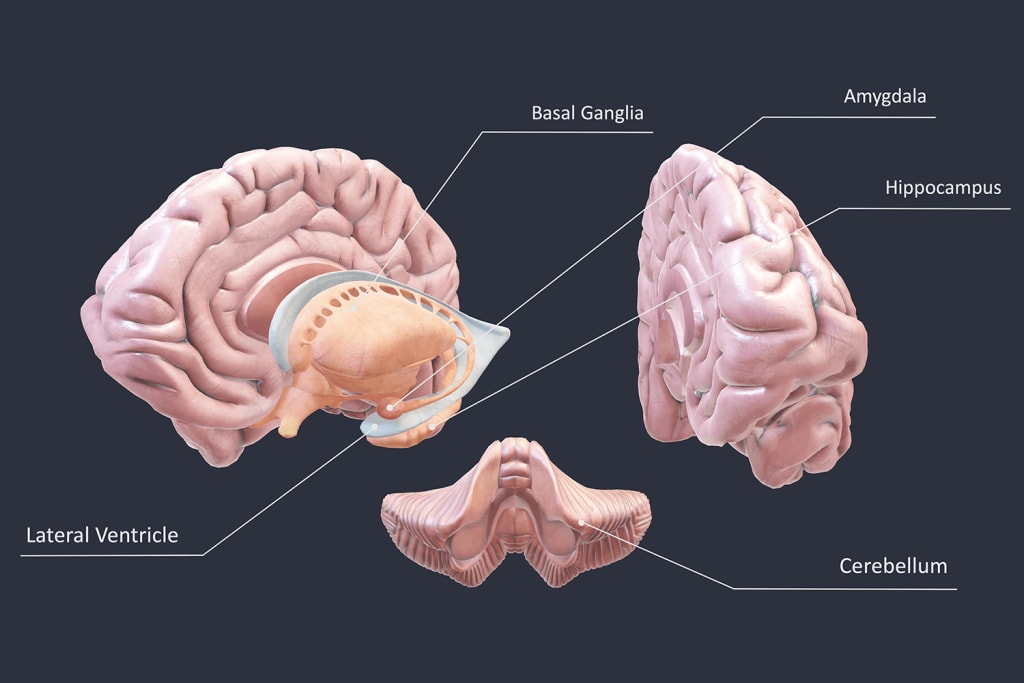
Exploring the Intricacies of the Human Brain: An In-depth Tour
Introduction (100 words):
The human brain is an incredibly complex organ that governs our thoughts, emotions, and actions. In this article, we will take a detailed journey through the different regions and structures of the brain, unraveling its mysteries along the way. By understanding the anatomy and functions of various brain components, we can gain valuable insights into how our brain processes information and orchestrates our daily lives. So, let's embark on this fascinating exploration of the anterior and posterior aspects of the brain, and delve into the significance of each structure we encounter.
Identification of Brain Lobes and Landmarks (200 words):
As we begin our journey, let's familiarize ourselves with the lobes of the brain. The frontal lobe, located in the anterior aspect, controls functions such as decision-making and motor activities. Moving toward the sides, we find the parietal lobes, responsible for sensory processing. The temporal lobe, situated beneath the parietal lobes, plays a crucial role in memory and auditory functions. At the posterior aspect, we encounter the occipital lobe, primarily responsible for visual processing. Additionally, we find the insula, a deep structure within the brain.
To navigate the brain effectively, we need to identify key landmarks. The longitudinal fissure, a long crevice, separates the two hemispheres of the brain. The central sulcus, also known as the Sylvian fissure or lateral sulcus, runs horizontally across the brain. Elevated areas on the brain's surface are called gyri, while the shallow depressions are known as sulci. Now equipped with this knowledge, we can proceed to explore the intricate structures of the brain.
Unveiling Brain Structures and Their Functions (300 words):
Let's zoom in and begin identifying the structures within the brain. The cerebrum, encompassing the majority of the brain's surface, is responsible for higher cognitive functions. Adjacent to the cerebrum, we find the cerebellum, which plays a crucial role in coordinating movement and balance.
The corpus callosum, a large bundle of nerve fibers, connects the two cerebral hemispheres, facilitating communication between them. We also encounter the anterior and posterior commissures, which enable further interhemispheric connectivity.
Within the brain's lateral ventricles, we find the septum pellucidum, acting as a partition between the hemispheres. Additionally, the fornix forms the floor of the lateral ventricles and is part of the limbic system, involved in memory and emotions.
The choroid plexus, located within the brain's ventricles, consists of specialized cells called ependymal cells. These cells produce cerebrospinal fluid (CSF), which cushions and nourishes the brain.
Moving on, we come across the thalamus, a vital relay center that processes sensory information and relays it to the appropriate regions of the brain. The hypothalamus, situated below the thalamus, regulates various bodily functions, including hormone production and temperature control. Between the thalami lies the interthalamic adhesion, a connecting structure.
The pituitary gland, often referred to as the "master gland," is connected to the hypothalamus via the infundibulum. It secretes hormones that regulate numerous bodily processes.
Within the brainstem, we find the pineal gland, responsible for secreting melatonin, a hormone that regulates sleep-wake cycles. The mammillary bodies, located on the ventral surface of the brain, are involved in memory processes.
As we move downward, we encounter the corpora quadrigemina, which consist of the superior colliculi, responsible for visual reflex
es, and the inferior colliculi, involved in auditory reflexes.
Further down the brainstem, we come across the pons, recognized by its distinctive "P" shape. Adjacent to the pons is the medulla oblongata, regulating vital functions such as breathing and heart rate.
Conclusion (200 words):
Our journey through the brain has revealed the remarkable intricacy of its structures and functions. From the lobes that govern various cognitive processes to the ventricles that house cerebrospinal fluid, each component plays a vital role in our everyday lives.
Understanding the anatomy and functions of the brain empowers us to appreciate its complexity and offers valuable insights into the workings of the human mind. By unraveling the mysteries of the brain, we can potentially unlock new avenues for treating neurological disorders and enhancing cognitive abilities.
Continued exploration and research into the brain's vast depths hold the promise of further discoveries and advancements in neuroscience. As we continue to unravel the intricacies of this awe-inspiring organ, we inch closer to comprehending the enigmatic relationship between the brain and human consciousness.
In conclusion, our journey through the anterior and posterior aspects of the brain has provided a glimpse into its remarkable complexity. It is a testament to the awe-inspiring nature of the human brain, a fascinating realm that continues to captivate researchers and ignite our curiosity about the depths of human cognition.





Comments
There are no comments for this story
Be the first to respond and start the conversation.